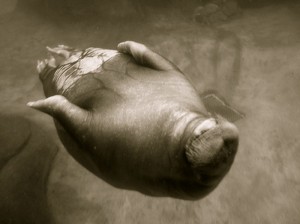This summer, WWF is helping support two expeditions that will take on some of the world’s most difficult waters, to see first-hand the effects of Arctic climate change. One expedition is sailing across the top of Russia, a journey of 6000 nautical miles through the Northeast Passage, while another is attempting a west to east transit of the Northwest Passage, also by sailing boat, a journey of about 7,000 nautical miles.
Tom Arnbom of Sweden was on the ‘Explorer of Sweden’ though the Northeast Passage, as was WWF Arctic Programme Director Neil Hamilton for much of the trip, replaced near the end by WWF polar bear coordinator Geoff York. On the ‘Silent Sound’ Cameron Dueck of the Open Passage Expedition is filing regular stories from the Northwest passage. Come back for photos and stories throughout the summer, and follow the progress of the boats as they follow in the wake of some of history’s most intrepid explorers.
By Geoff York

- Unalaska, heading for Dutch Harbour. Photo: Geoff York
When I come up for my final watch, we are at Unalaska Island, making our way into Dutch Harbour! It is still twilight, but the view is beautiful: steep mountains still mostly green, but with a dusting of fresh snow at higher elevations. The Aleutian Islands are among the most dramatically scenic places anywhere and I always hoped to see them someday. I just never imagined I would arrive to them from Russia!
Anders is also awake early as everyone is excited to be in port and looking forward to some time on land. The City of Unalaska and Port of Dutch Harbour support the huge commercial fishing industry that operates in the North Gulf of Alaska and Bering sea. We pass by some of the famous crab vessels from the Deadliest Catch video series and they dwarf our little boat.

- The Bering Star and the Nordic Star. Photo: Geoff York
By midday, we are tied up in the small boat harbour, freshly showered, and heading out to explore the town. Clearing customs was efficient, professional, and friendly and everyone from the harbourmaster to our boat neighbours and town folk were extremely warm and welcoming. My Swedish sailing mates dubbed Alaska their new favourite US state! We spend the balance of the day taking care of paperwork and orienting ourselves for laundry, showers on shore, and finding stores for ship supplies.
For me and Anders, the adventure with the Explorer ends here in Dutch. Niklas will assume command of the boat and take on new crew early next week. While his arctic journey is now past, his adventure is not even half way over as he will bring the boat back home to Sweden via the Panama Canal and expects to be in Gothenburg in early May. It has been quite a trip for us all and we look back over the trip from the beginning while sharing a good Alaskan Ale at the local pub.
The Arctic is one of the last and largest intact and wild ecosystems left on earth. It represents many things to many people: home, inspiration, potential for natural resources, polar bears, and sea ice. The Arctic is at the centre of the climate change discussion because impacts are occurring here first and faster than anyone predicted. Much of the news we hear from the Arctic is dire, and at times depressing, but there is hope.
Our voyage across the Northeast Passage was transformative. For me, it renewed my sense of hope in people and in the resilience of nature. The Arctic is not some far away frozen wasteland; it is a vibrant, productive, and necessary component of the planet. It is home to amazing people and wildlife. It provides crucial cooling and other services we all need to maintain life as we now know it in the southern latitudes most of us call home.
There are still places in this world where wilderness rules and wildlife is abundant. There are still opportunities for people and their governments to conserve these last wild and free places. The Arctic gives us one such opportunity.
We have a chance, fleeting and perhaps elusive, but a chance to save the Arctic and conserve what is best in this still remote and mystical region of our planet. Opportunities for reasonable and fair actions to be taken that will reduce greenhouse gas emissions and save the sea ice. It is through these actions that we can also save what is best about the areas we all live and reaffirm what is best in humanity.







